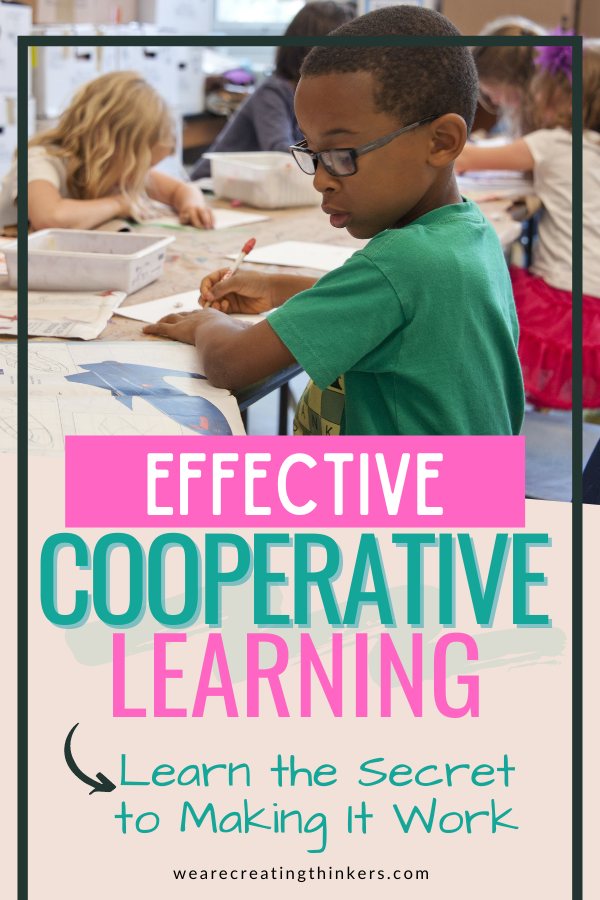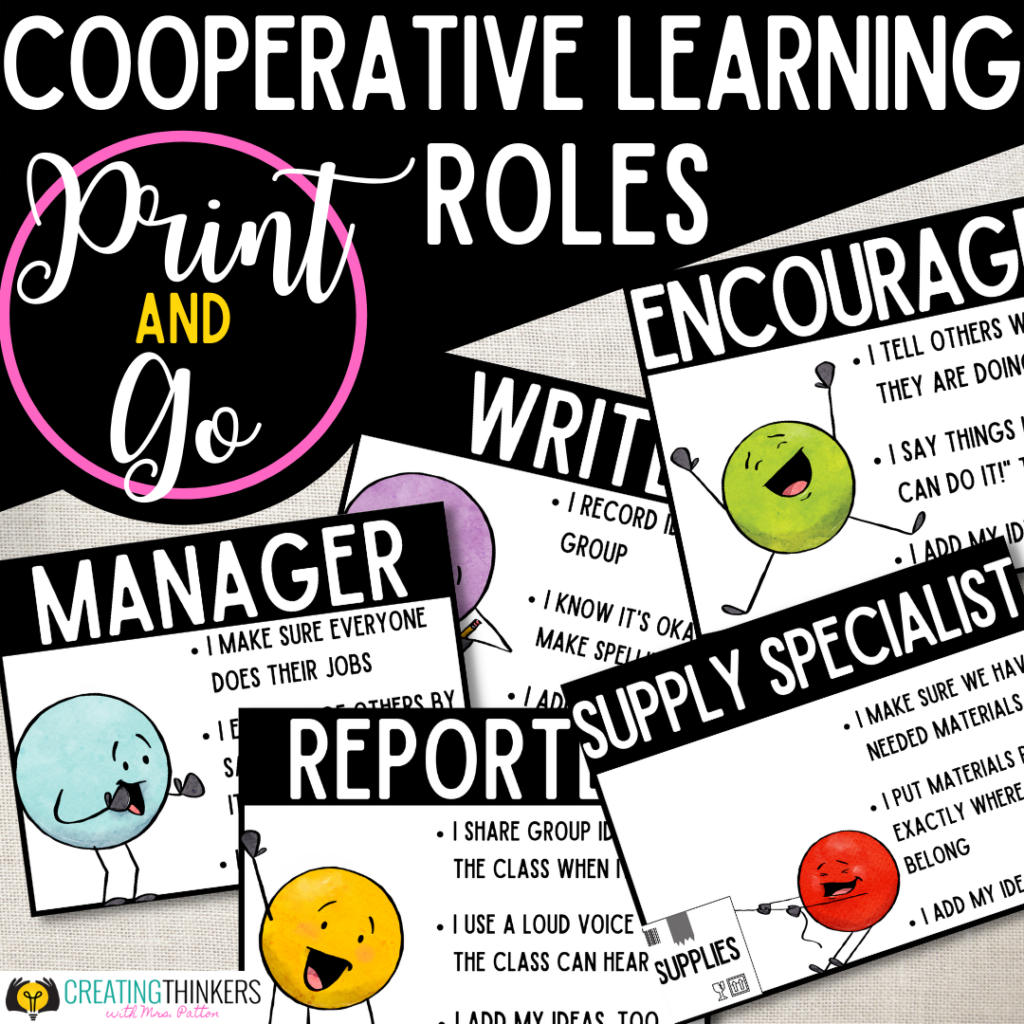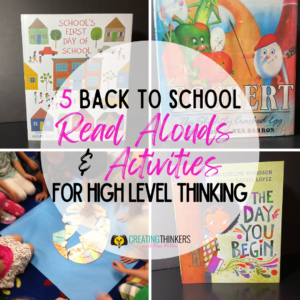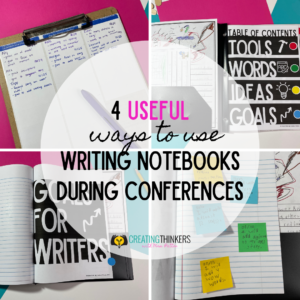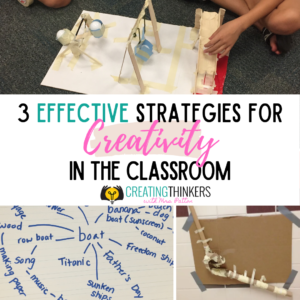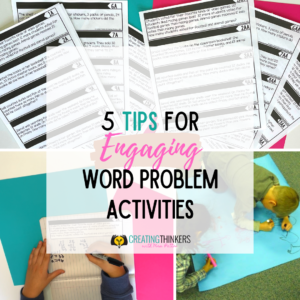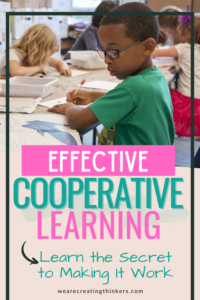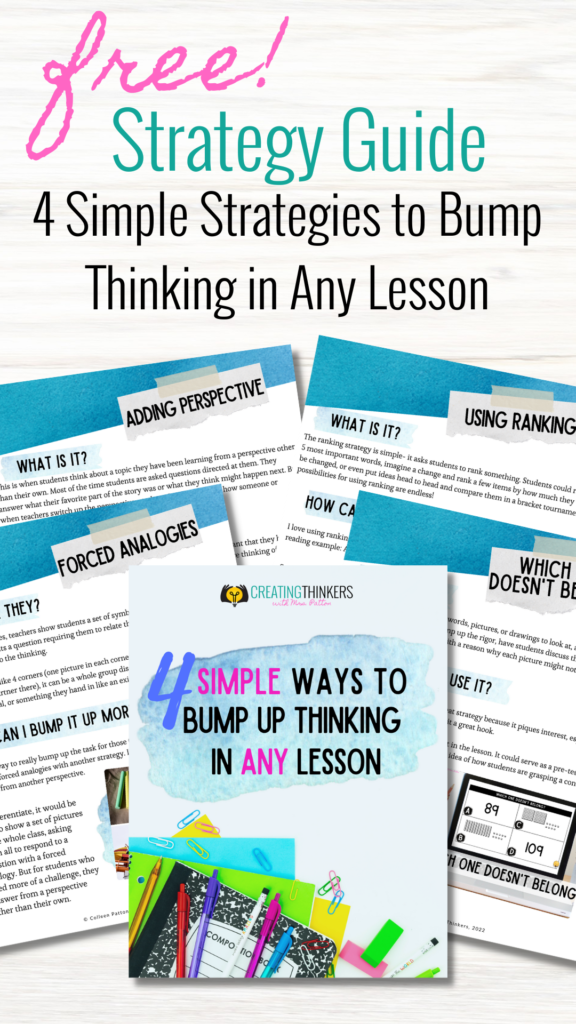Have you ever found yourself in the middle of a beautifully planned cooperative learning lesson only to watch it crumble? I have found this to happen in my classroom when I plan group work.
I used to think the struggle stemmed from my classroom management. Some student behaviors would derail the projects and groups were left unable to get along. I cannot tell you how many hours I would spend carefully planning exactly who should be together to make cooperative learning activities run smoothly.
After research and more experience in the classroom I realized the problem was bigger than grouping the right students together. The secret to helping students work through collaborative activities was more about the structure I had in place and the skills my students possessed.
Skills for Cooperative Learning
In cooperative learning, the skills students have mastered and the skills students lack become very obvious. Let me give you an example from my classroom (names have been changed to protect privacy).
After giving directions explaining the cooperative learning classroom activity, I ask students to begin. I scan the room and see most groups getting started, but notice a little commotion in one group already. Seriously?? We haven’t even started yet! I walk over and calmly ask what the problem is.
The students share their frustration with Bradley who is wandering the room and won’t join their group. I take a deep breath and talk with Bradley. After some talking, I convince him to join his group. Phew! Now they can all get started.
My sigh of relief is abruptly interrupted by an argument in another group. I walk over to see what the problem could be. I find that Jayla has an idea she really wants to share, but Kayman has dismissed it thinking his idea is the best one. After spending some time with them, I get Kayman to listen to Jayla and make a compromise between their ideas which I’m certain they felt required to accept. Good, I took care of that one, too.
Scanning the room I see other issues- Cameron’s group doesn’t seem to mind, but his back is to the group. He is playing with the fidget spinner he wasn’t even supposed to bring to school. He clearly isn’t engaged in the group project at all! After that I am shocked to discover that one group has gone off task altogether and has yet to even get the materials they needed to start the project- 20 minutes in! On top of it all, Devin assured me he was listening to his group, but usually had his legs in the air, several students asked to go to the bathroom, and my soft-spoken Stephen began to cry because no one would stop and listen to him.
I found myself putting out fires the entire lesson, and realized I would have to bump my lesson plans a day as we didn’t get much accomplished.
Did you find yourself chuckling or shaking your head as you read an all-too-familiar situation? Any new teacher would certainly feel the need to write off group work with an experience like that!
I used to go through experiences like this one making mental notes of how I could group the students to work together better. I’d contact parents about behaviors and imagine some point system I could use to help students behave.
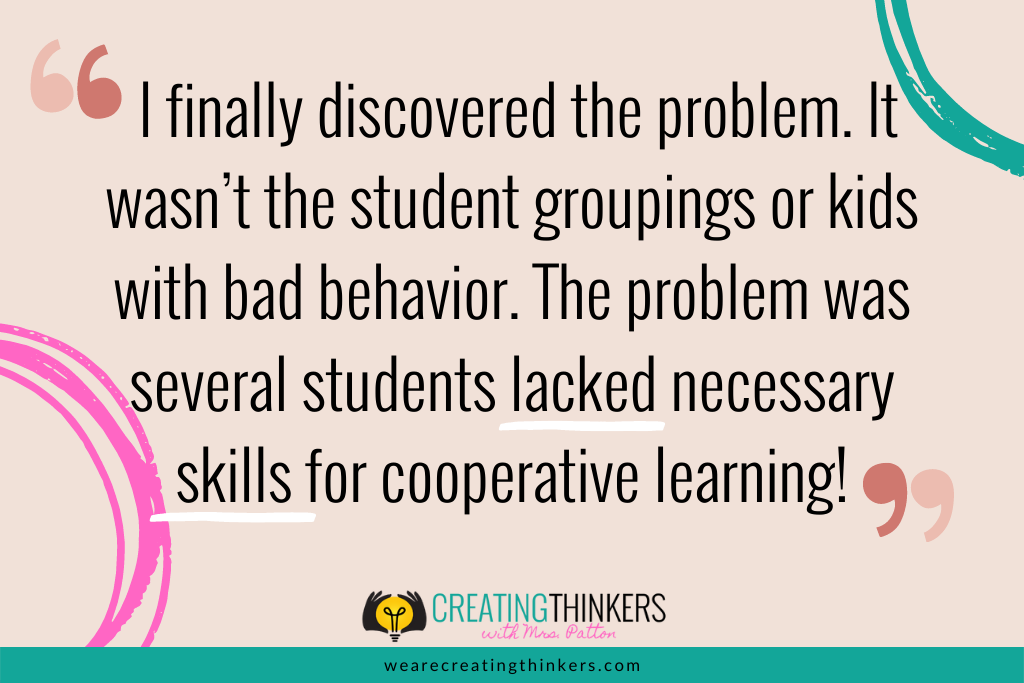
But then I finally discovered the problem. It wasn’t the student groupings or kids with bad behavior. The problem was several students lacked necessary skills for cooperative learning!
There are many ways to look at skills required to work in groups. These are the ones I have found my students need to participate in cooperative learning:
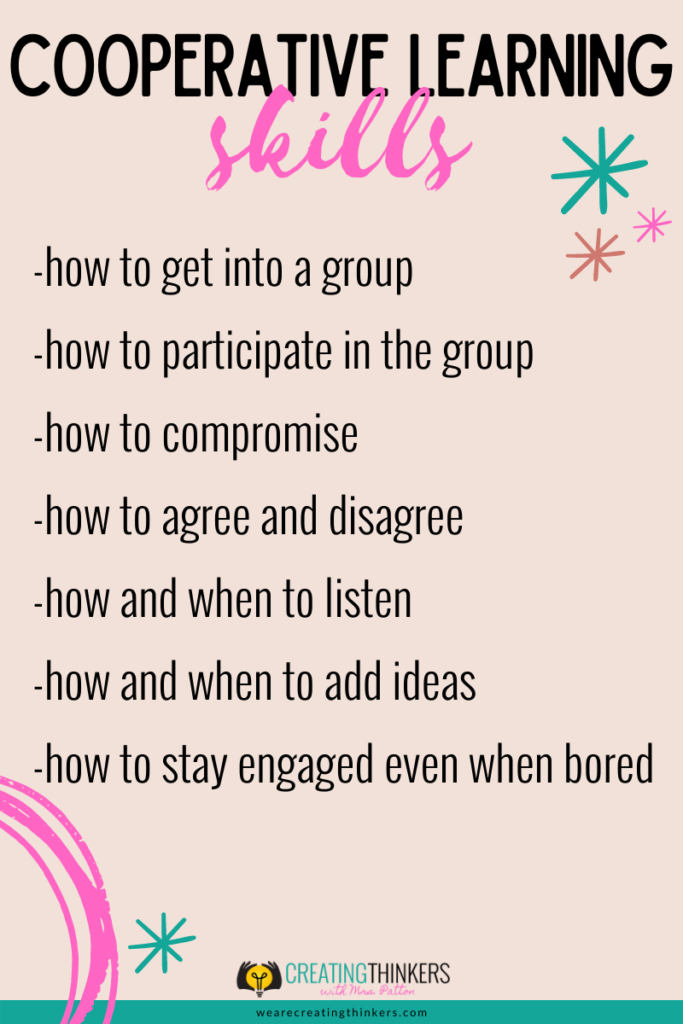
Realizing the enormity of the skills required, it makes sense why I might see so many behavior problems in my elementary classroom. These students weren’t trying to misbehave, I simply was asking them to do a task requiring skills they have never learned.
I have a challenge for you- go back to my example from my classroom and read through it with a different lens. As you read, see if you can identify the skill each child is missing.
Teaching the Skills: Adding Strategies to Students’ Toolboxes
Before planning more activities for cooperative learning, I realized I needed to teach my students the skills needed for effective group work. After all, I knew these are the skills students need throughout their life!
Part of the problem was students struggling to handle the way they were feeling. I’m frustrated, how do I let that go and continue participating with my group? Or I’m feeling out of control. How can I get out some energy and still help my group?
For these kinds of struggles, I gave students strategies to handle their feelings. I taught several strategies, one a week during our class meeting time, from this book:
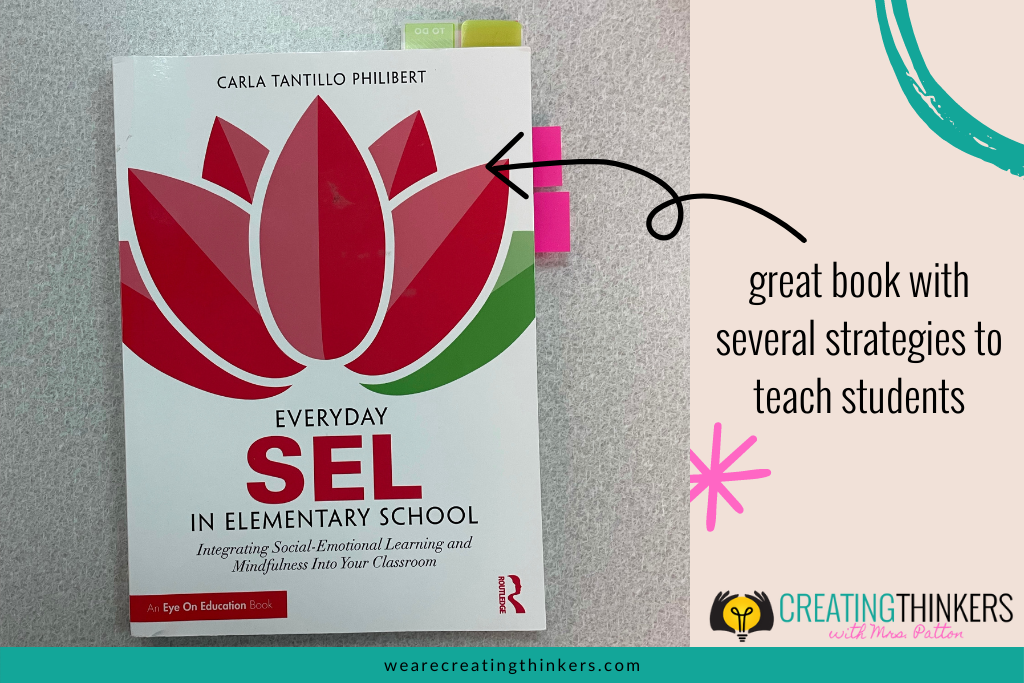
I taught my students how to walk away for a minute, do a breathing technique, then return to the group ready to contribute.
Students can come to this chart in my classroom, pick a strategy, read directions on the back to complete it, and then return to the group.
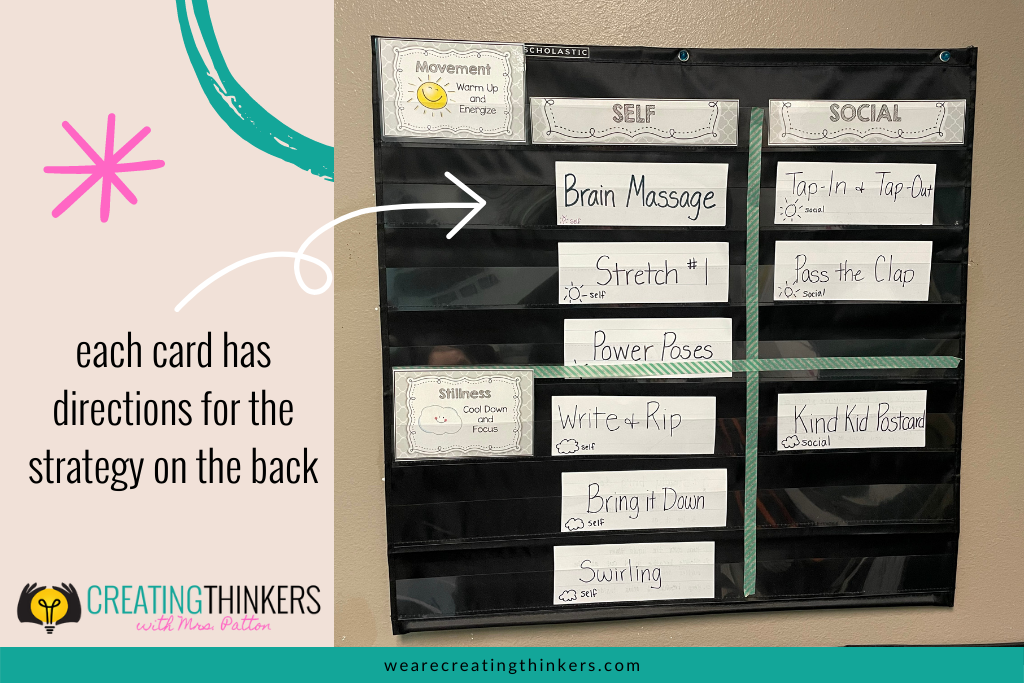
Several of my students need help managing the amount of energy they have each day. To help these students, we use wiggle seats and kick bands on their chairs. For many of them, the extra movement these tools allow is all they need to help them stay with the group.
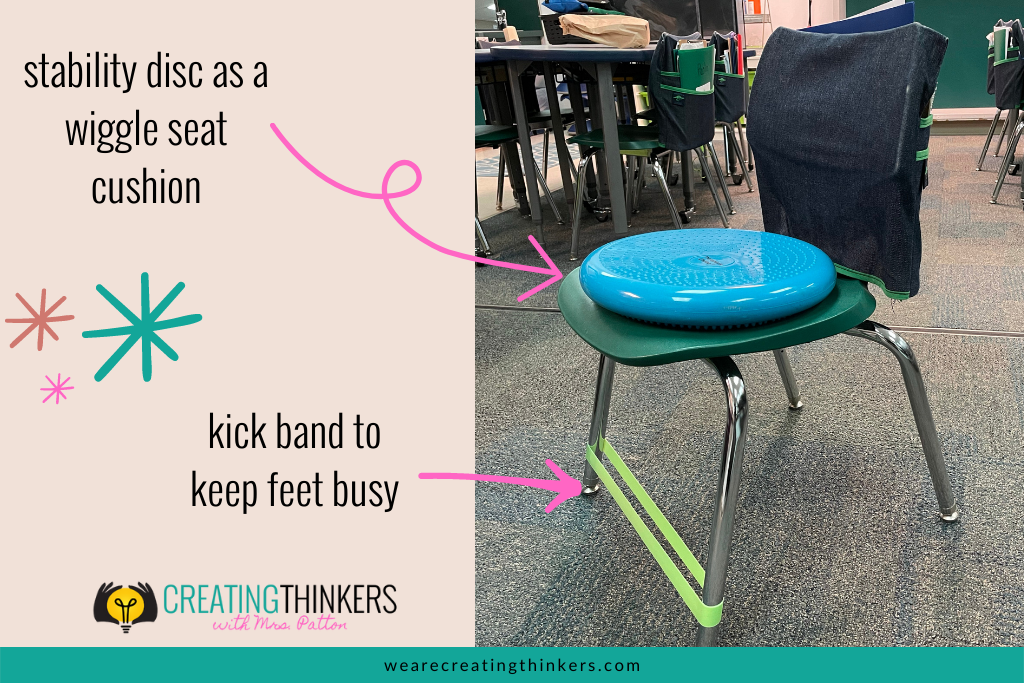
Another strategy that helps students who need to get energy out or simply need a quick break is to use a mindful path. I am lucky enough to have a little hallway outside my room. We put tape in this area to make a mindful path of our own! My students love the freedom to do the path 2-3 times quickly and then return to class ready to learn.
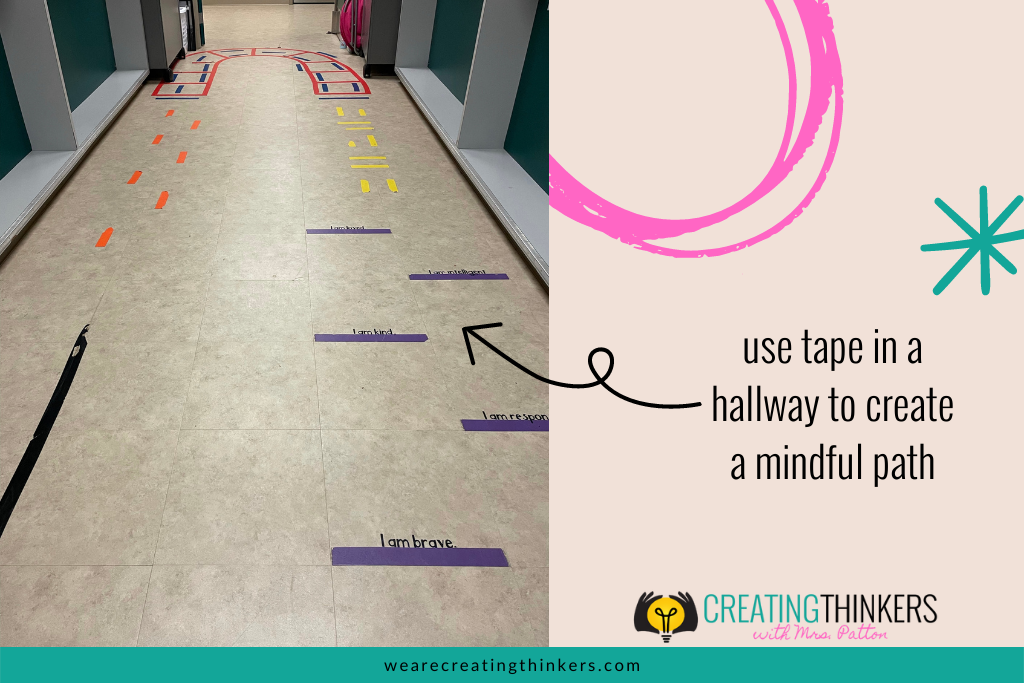
If you want to read more on mindful paths, check out this article on weareteachers.com.
Once we had these options in place, I still needed to teach students the skills required to successfully participate in small group cooperative learning.
I made slides like this to walk through different aspects of working in a group.
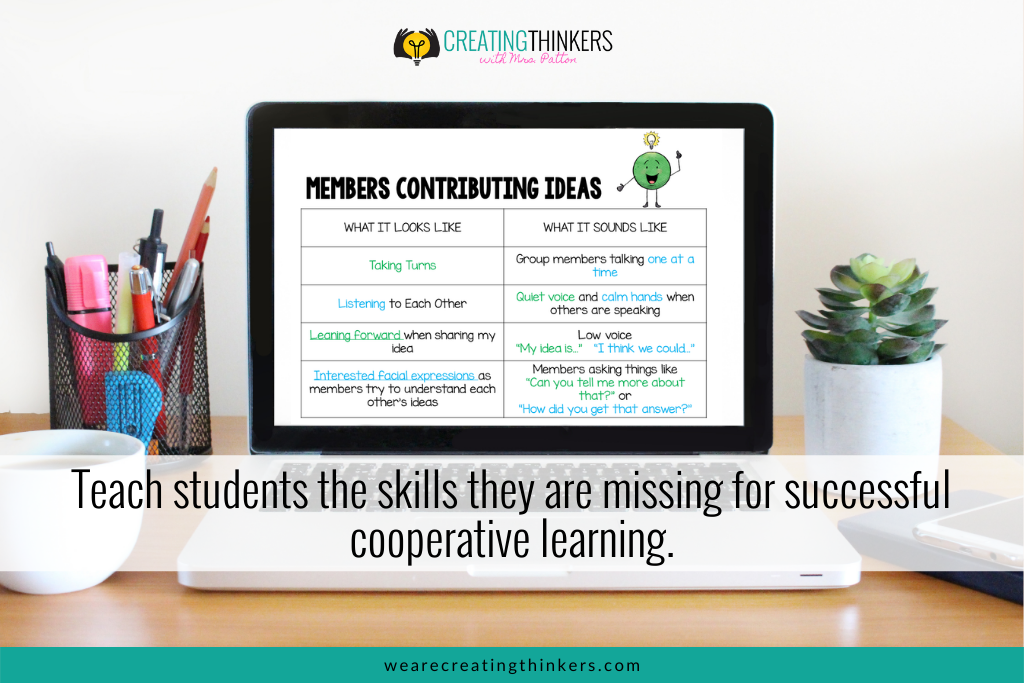
We spent some time discussing how to get in a group, contribute to the group, and politely disagree.
Knowing that my students each have different things to work on, students set mental goals moments BEFORE getting into cooperative groups. To show how important these skills and goals were, I made sure to close the activity each day asking students how well they did in working towards their goal.
With lots of repetition and practice, my students realized these skills were important and worked to learn them and own them!
Adding Some Structure: Roles for Cooperative Learning Groups
In addition to all of this, I realized the importance of roles in a cooperative learning group. I always made sure to design my lesson plan for cooperative learning around a worthwhile activity. I designed it so each student could contribute. What was missing was specific roles within the group.
I came up with 5 roles that work well with my group work and designed posters to outline their responsibilities.
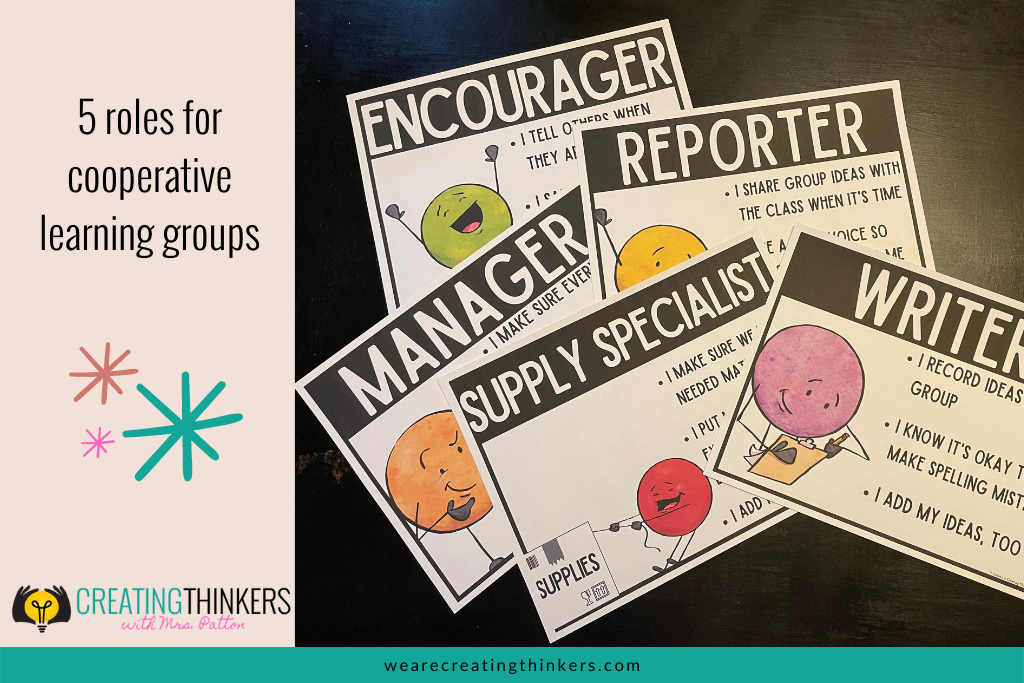
Having roles like these gives the right amount of structure for students to feel safe and comfortable in group work. Now, my students know exactly what I expect of them as well as from each of their teammates.
To make the roles crystal-clear to everyone, we also have table tents in front of each group member. It helps me as I circle the room to notice who is on task and fulfilling their roles.
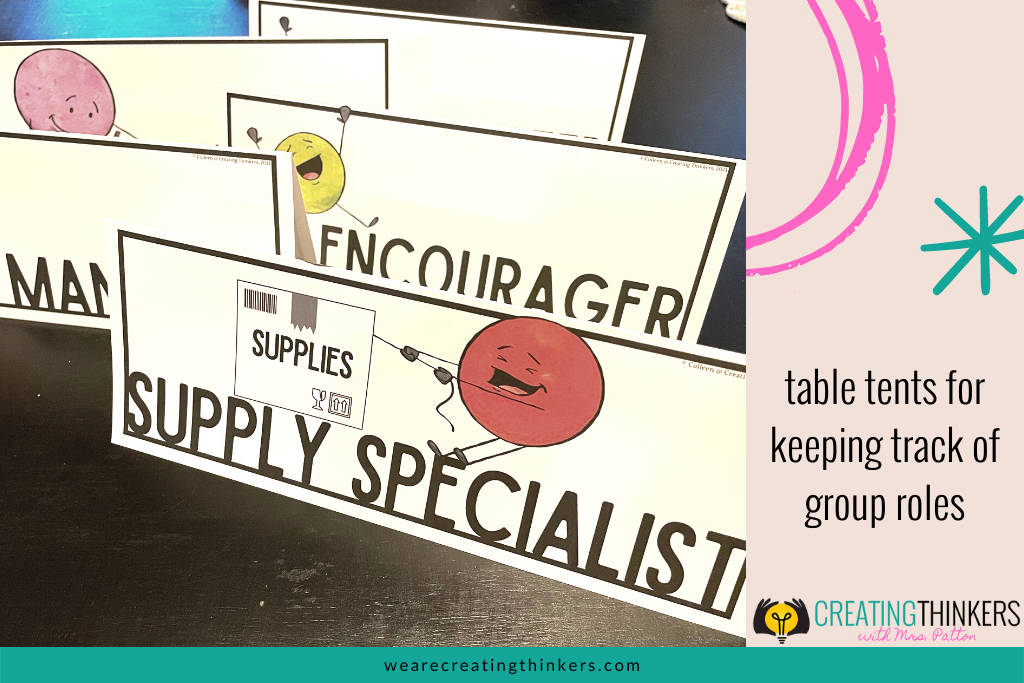
After using these roles several times I watched students get comfortable with them. They started to realize which roles played on their strengths and which ones could help them grow. Coupling the roles with the skills expectations I had on the board, I saw children actively participate who struggled to do so before. It really was quite the transformation!
If you would like the posters, table tents, and teaching slides I used click the picture below:
Give These Cooperative Learning Teaching Strategies a Try!
If you find yourself in a similar situation with cooperative learning, I encourage you to give these strategies a try.
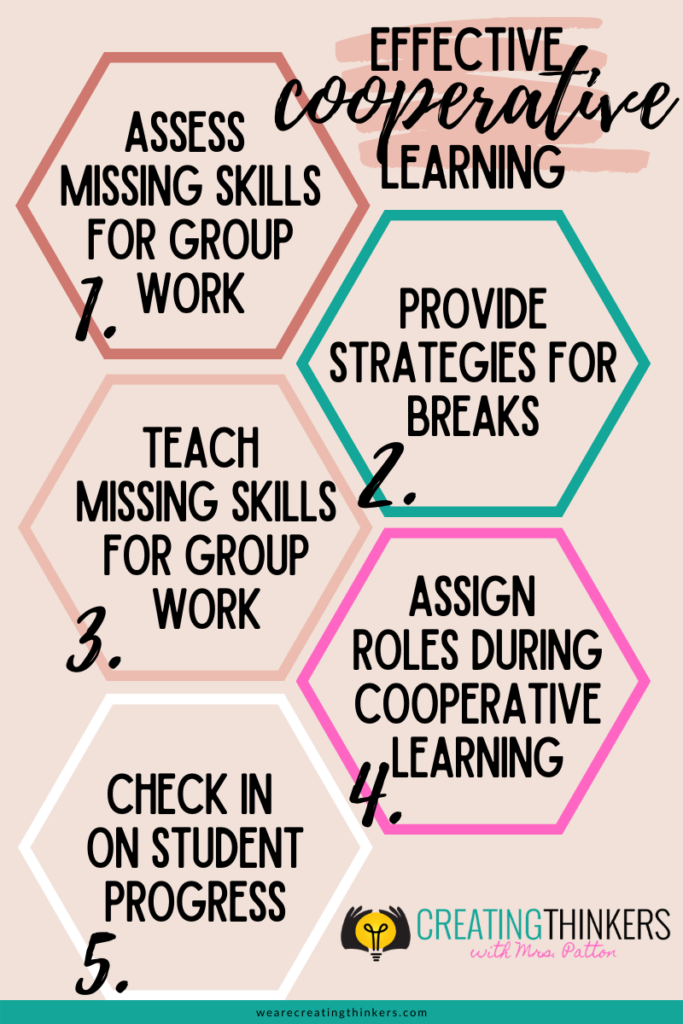
You may just find a more engaged classroom with students who are comfortable enough to take risks in their thinking. These are all things we need to make happen on our journey to create thinkers!
Don’t give up after a time or two as it does take practice to improve. You won’t be sorry!

Let Me Help You Turn Your Students into Thinkers!
If you have a passion for getting your kids to think, you’ll love my FREE Guide. It’s about 4 simple strategies to bump up the thinking in any lesson. Download it for free and stay in touch to get classroom-tested ideas straight to your inbox!
Keep those kids thinking!
Colleen Patton
Note: Some of the links in this post are affiliate links. I may get a small commission if you purchase these, but hey that helps me to keep offering some awesome freebies for you!

